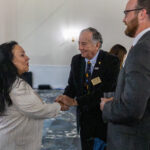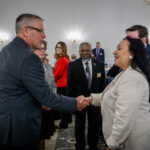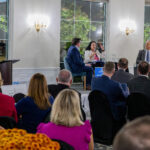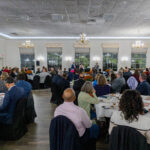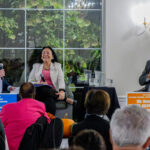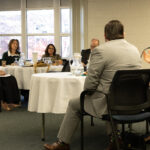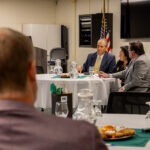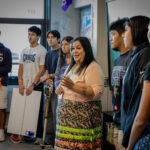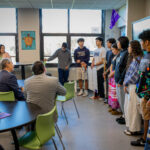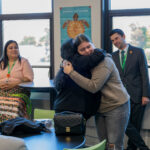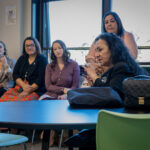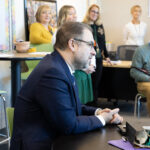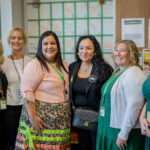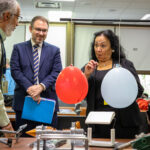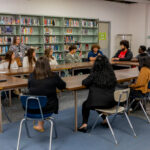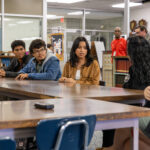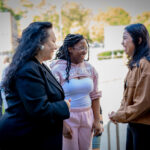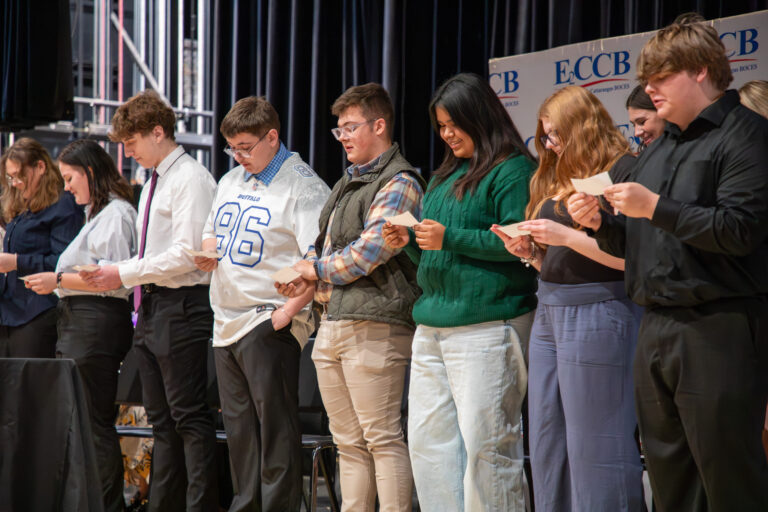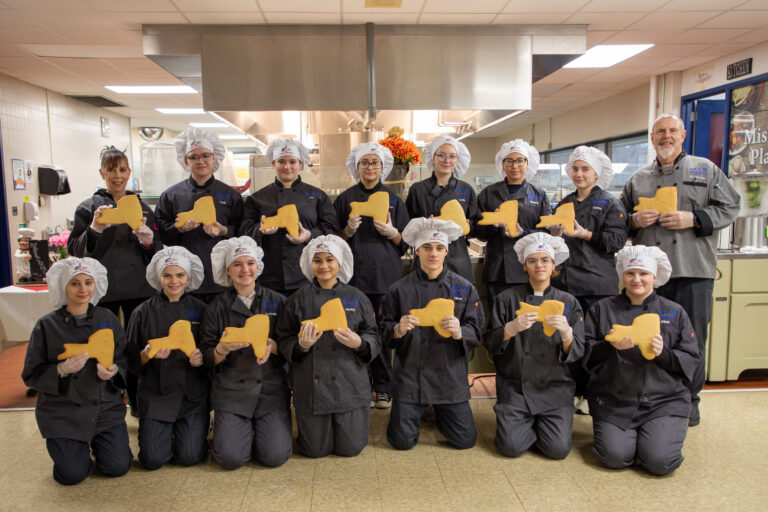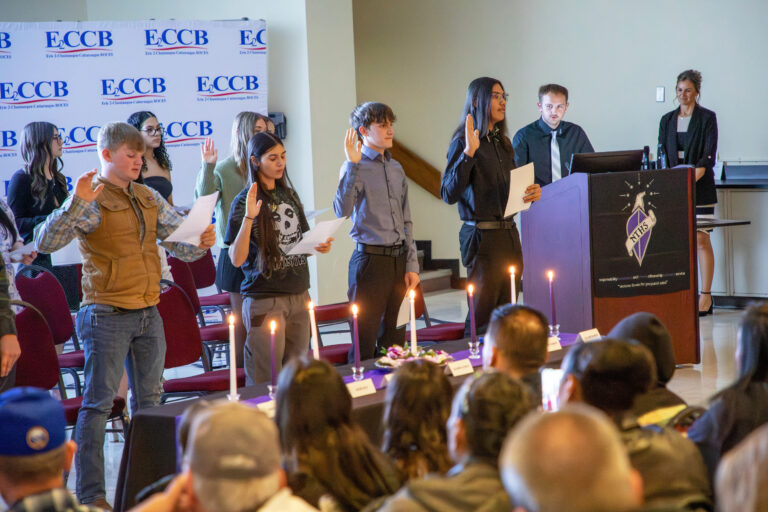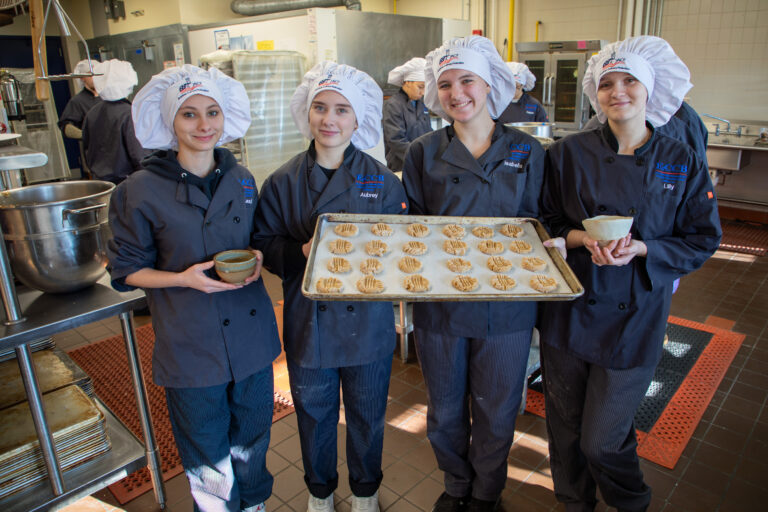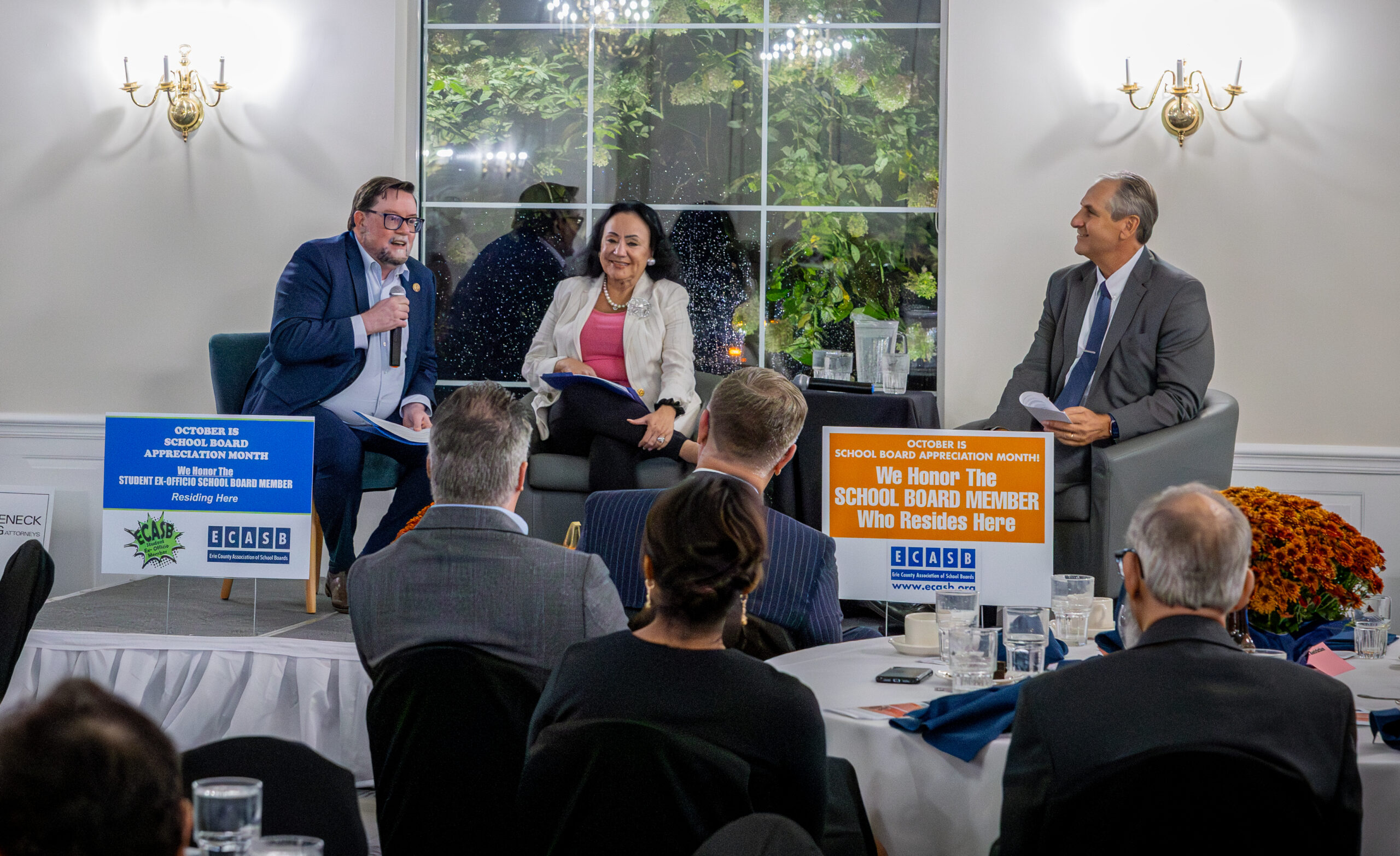
HAMBURG, N.Y. — New York State Education Commissioner Dr. Betty A. Rosa brought the state’s “Portrait of a Graduate” vision to life during a two-day visit to Western New York this week, opening with a dinner and conversation on Oct. 7 at Michael’s Banquet Center in Hamburg. The event, organized by the Erie County and Chautauqua County School Board associations, was the beginning of a meaningful conversation that carried throughout school visits across the Erie 2-Chautauqua-Cattaraugus BOCES region.
Emceed by E2CCB District Superintendent Dr. David O’Rourke, the dinner set the tone for the trip, with Senior Deputy Commissioner Dr. Jeff Matteson joining Rosa to outline how New York is reimagining student success through applied learning, multiple pathways to demonstrate mastery, and a unified diploma that recognizes depth of knowledge without creating tiers.
“In 2019, when I wrote a piece about the Graduation Measures, part of it had to do with the fact that at that time I really truly felt that there were students who came to us with their natural curiosity, talents beyond belief, multiple ways of demonstrating those talents yet we had put these barriers and we were not giving them the opportunity to demonstrate those gifts,” Rosa said. “Portrait of a Graduate, for me personally, is an opportunity to allow every single student — and all means all — to really take those tools and think about being successful and the opportunities to engage in something you truly enjoy.”
From the outset, Rosa framed the initiative as both personal and practical.
“Because I was able to engage with someone like Regent Beverly Ouderkirk, who took me to St. Lawrence-Lewis BOCES in Massena, I saw … the application of learning. It wasn’t just classroom learning, standards work … but it was taking all that learning and connecting it to what I call applied learning,” Rosa recalled. “The beauty of seeing the kids’ joy and their aha moments really helped me see the portrait of those graduates in their own design, in their own way. Giving them their canvas, and giving them their paint brushes, and allowing them to design, really design their stories using their gifts.”
On Wednesday, the tour shifted from talk to practice. Students from Gowanda, Lake Shore, and Silver Creek school districts shared how a Seneca language program is helping them connect more deeply with their culture and community. The initiative blends academics with traditional Seneca language lessons and hands-on activities like crafting beaded moccasins, shaping clay pots, and preparing traditional foods over open fires. For many students, these experiences serve as both cultural preservation and personal empowerment.
“It’s more than language, it’s culture — it’s artistry, it’s science, it’s STEM, it’s engineering,” said Lake Shore Superintendent Philip Johnson, emphasizing how the program builds pride, mentorship, and a sense of belonging that extends far beyond the classroom.
Later at WNY P-TECH — a collaboration among E2CCB, Jamestown Community College, public school districts, and regional industry partners — students and educators showcased pathways in welding, mechanical technology, mechatronics, and computer-aided design that exemplify the state’s emphasis on applied learning.
Student speakers Tyrick Nadi of Southwestern (Welding), and Dunkirk’s Myah Benjamin (CADD), Herman Color Ortiz (Mechanical Technology), and Luis Felipe Gautier (Mechatronics) described how shadowing days, pathway trials, and extensive time in labs and shops helped them discover interests, build employable skills, and earn early college credits. The Commissioner pressed the students to get to the root of their decisions for joining WNY P-TECH, asking, “What was the connection that helped you know this is what you wanted to do?”
“At my home district, the work was very cut and clear — this is what you need to do to pass,” said Whitney Hice, a ‘21 graduate of WNY P-TECH and current employee of eBusiness Solutions. “But at P-TECH, this is different. You’re hands on, you decide what you want to do, and you’re going to decide where you want to take your future.”
Industry and higher-education partners on hand — including Dunkirk Metal Products President Joe Shull and JCC Dean of STEM Amber Kautzman — confirmed the program’s direct line from classroom to career. Shull indicated the P-TECH program has helped to create a direct pipeline of employees to his company as well as other companies in the region, from shadowing to internships and eventually careers. Senior Deputy Commissioner Jeffrey Matteson, and Assistant Commissioner David Frank accompanied the tour, noting how such partnerships make it realistic for every student to experience work-based learning before graduation.
Between site visits, the Commissioner and Senior Deputy Commissioner met with superintendents from E2CCB’s component districts for a candid discussion about policy implementation. District leaders pressed state officials on the federal budget’s significant impact on New York State. They spoke about sustainability, the educator workforce pipeline and staffing pressures, and the prospects for regionalization and shared services. Rosa and Matteson emphasized flexibility and local partnership as cornerstones of the Portrait of a Graduate, noting that districts succeed when they take stock of their own assets, build durable community connections, and open multiple pathways for students to demonstrate readiness.
“Find out what your assets are in your community and what potential partnerships are in your community, and start that now. We’re going to want to have students provided opportunities because one of the expectations of the Blue Ribbon Commission is that Career & Technical Education be available to every student. So, every student gets work-based learning of some kind before they leave. You’re going to need partners to get to do that,” Matteson said. “There’s a small rural community in central New York that already has 55 partnerships. When you start knocking on doors, you find out there are a lot of people up to a lot of cool stuff that you just don’t know because we don’t know each other, and we don’t engage with each other anymore. We challenge you to do that.”
Across Lake Shore, WNY P-TECH, and a visit to Jamestown Public Schools, students spoke of opportunities presented to them and how they’re each taking advantage of those opportunities. The narrative that emerged over two days was consistent: Western New York has many examples showing how the Portrait of a Graduate can be attained. In schools that honor curiosity, invite community, and value many ways of showing mastery, students find both the canvas and the craft to design their futures. That is the promise of New York’s Portrait of a Graduate, and on this week’s Western New York swing, it looked less like a policy and more like a picture already coming into focus.

